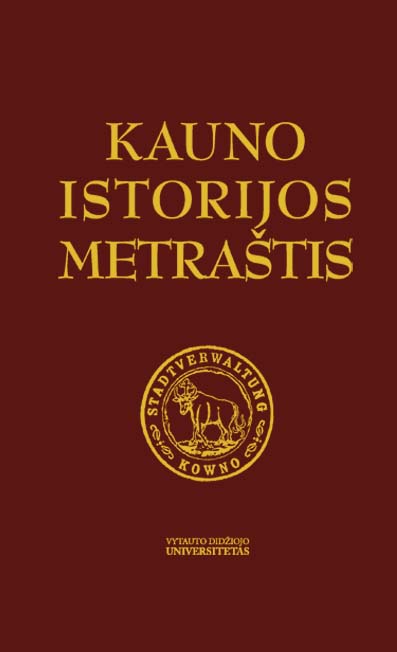Rusijos imperijos kariuomenės žygis pro Kauną 1757 m.
The March of the Imperial Russian Army Through Kaunas in 1757
Author(s): Liudas GlemžaSubject(s): History, Military history, 18th Century
Published by: Vytauto Didžiojo Universitetas
Keywords: Russian army; Zabiellowie (Zabielos); Kaunas; Fortification; Maps of town
Summary/Abstract: In the 18th century, the sovereignty of the Polish-Lithuanian Commonwealth was weakening, and it became increasingly more dependent on the neighbouring countries. These changes also affected the city of Kaunas, through which the Imperial Russian Army marched in 1734, 1735, 1748, 1757, 1759, 1763 and 1764, while in 1767–1774, 1792–1794 and 1794–1795, its garrison was located in the city. The foreign army often targeted Kaunas because of its geographical position: it was close to the Prussian border, there was the most direct overland route from Petersburg to Warsaw through the city, and the confluence of the two largest Lithuanian rivers, Nemunas and Neris, was especially important to the city because it not only regulated trading but also facilitated army provision. The biggest march of the Russian army through Kaunas took place from May to October, 1757 when the army of 50 000 soldiers led by Field Marshal Stephen Apraksin marched to Prussia and left the garrison in the city. This was a short period of the Seven Years’ War; however, it was particularly significant in the history of the Grand Duchy of Lithuania as a foreign army was allowed to march through the territory of Lithuania. Even though the march was monitored by local officials and the actions were observed on the international level, the fact itself demonstrated the decline of the power and authority of the country in the international arena. This march of the Russian army also had some influence on the city development; therefore, it was mentioned even in the first histories of Kaunas. Nevertheless, the only fact mentioned was that military leadership ordered to make stoves from the tiles of abandoned houses for baking bread and satisfying the needs of the army. Russian military engineers not only fortified the city but also left the oldest known plans of the city. The fortifications made in 1757 in Kaunas undoubtedly influenced the establishment of the foreign army garrisons later on. Based on the documents of Kaunas magistrate and the reports of Antoni “Zabiełło”, Kaunas powiat (county) marshal, to “Michał Kazimierz Radziwiłł”, the hetman of the Grand Duchy of Lithuania, the present article describes the circumstances of the Russian army march through Kaunas, retreat from the city, the relationship with local residents, activities in the city, and mood and reaction of local residents. This information is presented in combination with the research and documents about the Imperial Russian Army march to Prussia through the territory of Lithuania. This way, a general picture of the events of 1757 is created, focusing on the issues of the city and the powiat (county).
Journal: Kauno istorijos metraštis
- Issue Year: 2016
- Issue No: 16
- Page Range: 7-32
- Page Count: 26
- Language: Lithuanian

